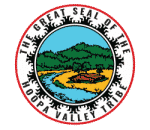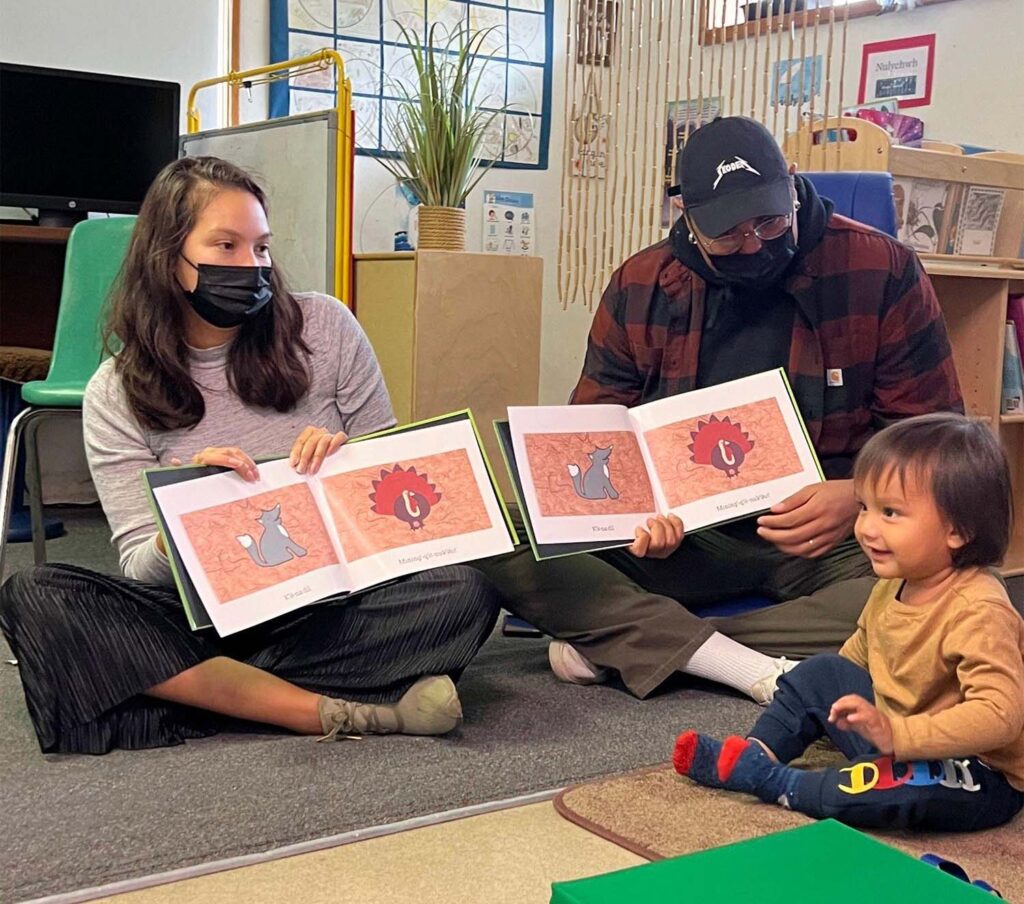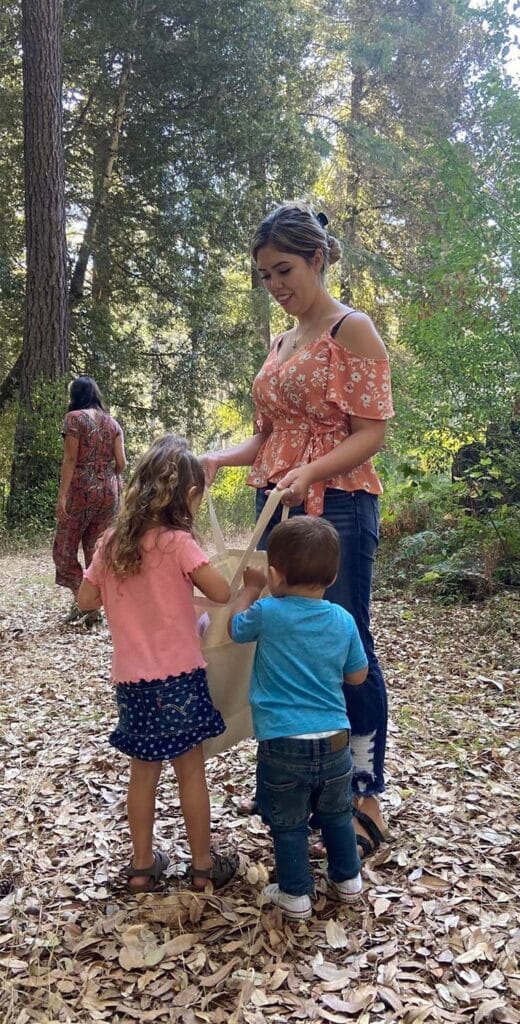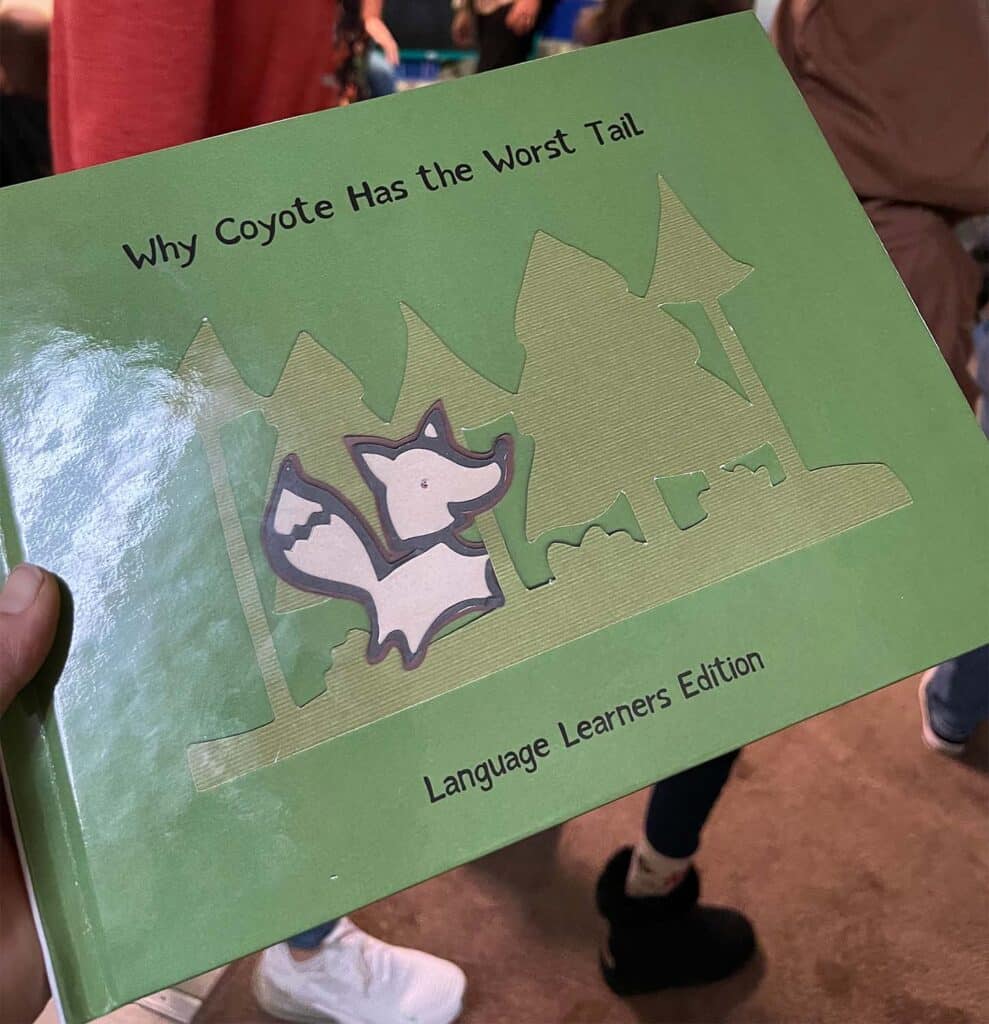Babies Learn Hupa Language Through Immersion
Hupa as a First Language
By Allie Hostler, Two Rivers Tribune
While some children wake up on Saturday morning to watch cartoons and relax after a long
week of school, a handful of others gather for breakfast and a Hupa language immersion session
with their moms, dads and tiny peers.
The most recent Hupa Language Immersion Nest session for babies age 0-2 concluded last
Saturday, December 17. Since the group first met more than nine weeks earlier, several of the
babies have grown from infants to toddlers, are now crawling, walking, talking and singing in the
Hupa language.
During the two-hour immersion session, it was easy to see which songs caught the attention of
the babies, each of whom had their name worked into the chorus of a welcoming song sang in
the Hupa language. Toddlers ran in circles and sang along. Babies’ eyes brightened with smiles
and their legs bounced back and forth as they danced in their moms’, grandmas’ and aunts’ arms.
“I can tell they feel really loved,” Muriel Ammon, one of the class instructors, said. Ammon
explained how she grew up speaking some Hupa with her father, Danny Ammon, who also
teaches Hupa language at Hoopa High School. “But, it could have been more. I see these kids
and think about what we’re doing for these kids, it’s really special.”
This group of babies is the first to have Hupa language taught as a first language in a very long
time—several generations. Dr. Sara L. Chase Merrick, the project lead, said they hope to continue immersion activities with this same group of babies as well as add additional cohorts as
their program grows into an immersion pre-school. “We’re building a line of first language
speakers.”
Chase-Merrick, in partnership with the Hoopa Tribal Education Association, was awarded a
$400,000 Spencer Foundation Research-Practice Partnerships grant. This grant project builds
from previous Hupa Language Immersion programming research-practice collaborations with
expert speaker Verdena Parker, mentor Hupa Language Teachers and the Hoopa Tribal After-
School Program. It is centered around the question: How can we expand current short-term
language and education resurgence efforts into an effective long-term program?
The project addresses these areas of expansion: 1) Curriculum 2) Learner-Teacher Training 3)
Planning and Outreach 4) Previous Research.
Mother and participant Starlene Bussell said she plans to stay involved with the Language Nest
with her son, as well as a new baby she is expecting in February. “I love the books and other
materials they gave us, as well as the new songs to sing with our babies. The songs are what
really held my son’s attention,” she said. “Plus they did a lot of interactive activities that kept my
son busy and involved. My son loved being able to play and learn with the other babies that were
there.
The Hupa Language Nest It is grounded in the specificity of the Na:tinixwe (people) and
Na:tinixw’ (place), yet have implications for Indigenous contexts across the world, endangered
language communities, and education research-practice.
“With this grant we are hoping to create a user-friendly Hupa language curriculum archive, learn
from other Indigenous communities who have established language immersion programs, gain
community support and awareness of the work we are doing, and continue to build the fluency of our Hupa Language Learner-Teacher cohort. Our ultimate goal is to launch a pilot full-time four-
hour per day, four days per week Hupa Language Immersion Nest for pre-school aged children
in the fall of 2023. Our Nohk’isdiyun Nohoł (baby group) sessions are the beginning of our
recruitment of students and families for this program and gain more community support,” Chase
Merrick said.
The immersion school concept is well-underway and the hope is that the new education building
will provide a place where the school and its students can thrive.
“One of the things about the Nest that gave me the most joy is knowing that my son will have
partners to speak the language with as he grows,” Bussell said. Fortunately my two older kids are
really interested in our language and we use it daily in our household. A huge plus is that they
have a grandpa, Gordon Bussell, who teaches them at the house as well.”
“The kids really crave the language,” Jenna Hailey, who also helps instruct the class, said. “I’m
learning as an adult and it’s so awesome going through this with these babies—to see the
language be a part of their life, as if they’ve never known life without it. We’re building our
fluency together.”
Erika Tracy serves as the Language Nest’s Communications Specialist. “Starting a pre-school
has always been a goal. We’re working with the After School Program to make that happen. We
have four teachers and we’re going through all of our material and always creating more
material.”
Over the years, posters, songs, videos, books and other classroom materials have been developed
to make the language more accessible to the community and especially to young pre-school aged
children. Hupa language immersion projects began some years ago. Chase Merrick’s first organized immersion project in Hoopa was in 2013, then in 2017, she received a Dreamstarter
grant that helped solidify summer immersion camps as a mainstay in the community.
“My overall dream remains the same,” she told Dreamstarter in 2017 . “My initial Dreamstarter
project gave my community and I the opportunity to being building towards this dream. The
XontehL-taw Language Immersion Camp is now an annual event in the community.”
“It’s very important to lay a foundation for these kids to help revive the language and keep it
going,” Lovie Sanchez said.
“Thank you [teachers], this is truly our happy place,” Viola Marshall, a teacher and participant
said. “Everyone is truly inviting and I got to watch my granddaughter learn and grow in Hupa
language. It was the best experience I could ask for.”
Marshall uses the Hupa language with her 11-month-old granddaughter Melody aka Milimil
(flute in Hupa) daily at home to reinforce what they’ve learned in the Language Nest. “She
seems to understand. She lights up when hearing and speaking Hupa.”
The core group of teachers and contributors includes: Sara Chase Merrick, Erika Tracy, Lovie
Sanchez, Jenna Hailey, Shelly Carpenter, Muriel Ammon, Danny Ammon, Ginger Rogers, Viola
Marshall and Verdena Parker.
Follow the Hupa Language Nest Immersion on Facebook at https://www.facebook.com/xontehLtawhupa or on Instagram @hupalanguageimmersionnest.



